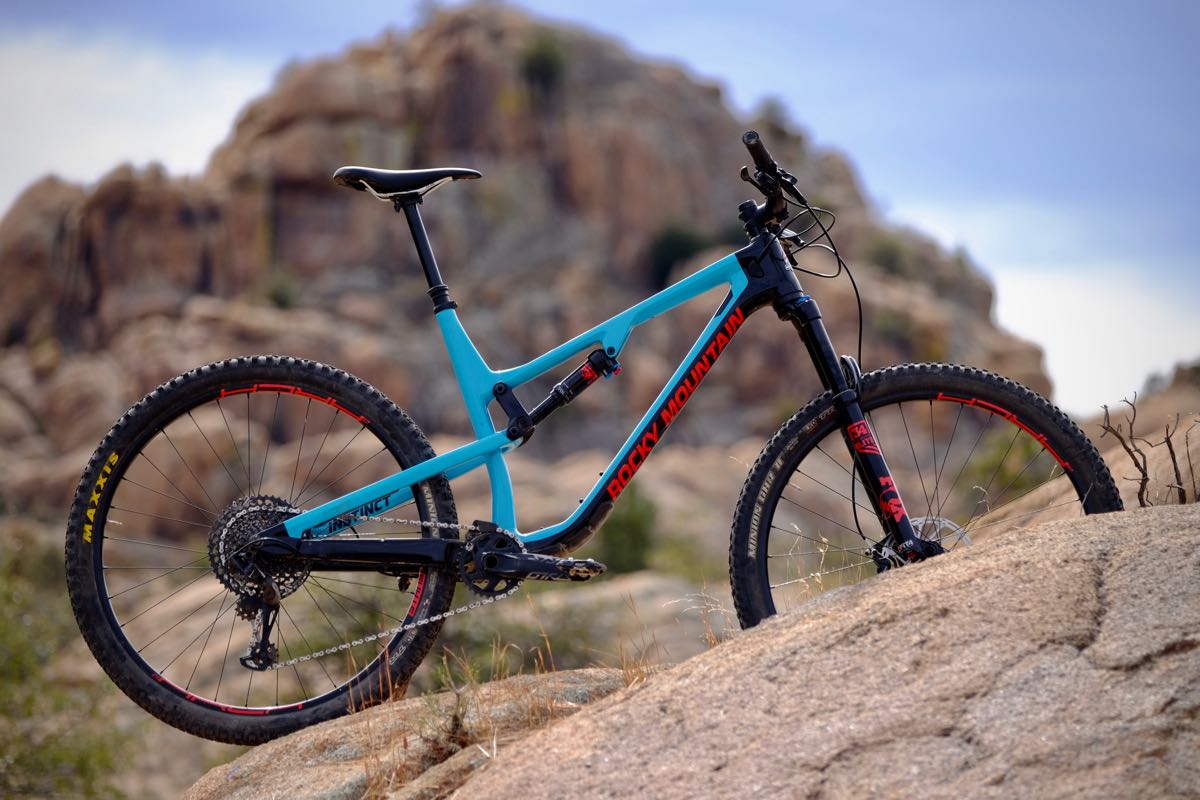One of my favorite bikes of the last few years was the 2017 Rocky Mountain Instinct BC Edition. As is sometimes the case, we just clicked. When I had the chance to spend an extended period of time on the all-new Instinct Carbon 70 with its revamped frame, I hoped Rocky hadn’t changed the formula too much.
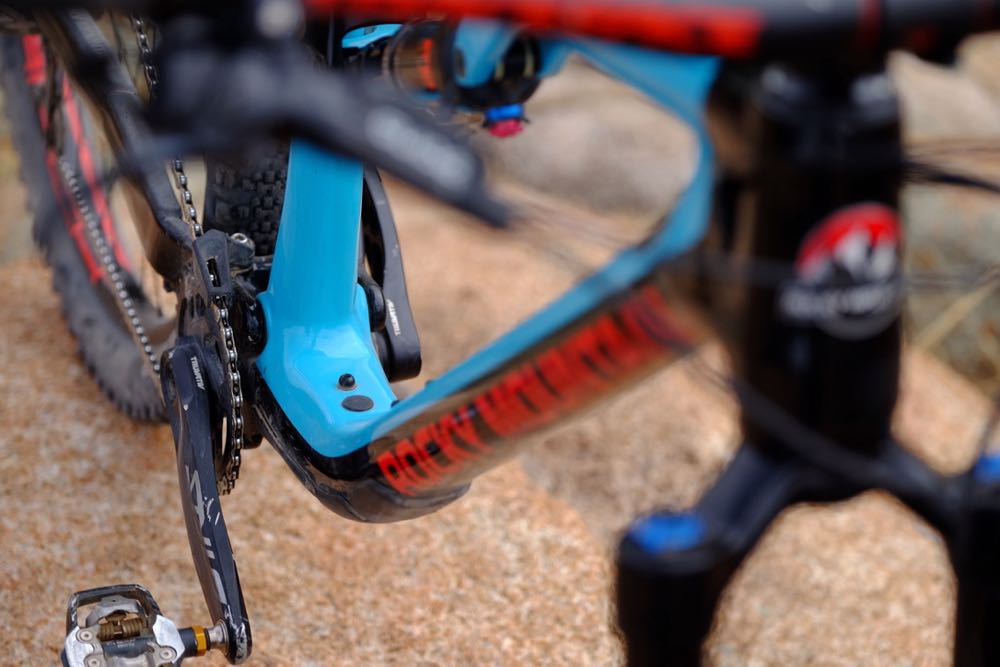
For 2018 the entire Instinct lineup received a substantial reboot with a completely new frame designed to tackle rougher terrain at a quicker clip. The most noticeable change was the addition of an extra 10mm of travel in the core models with the beefed-up BC Edition pushing an extra 15mm for a total of 155mm in the rear. In the case of the Instinct Carbon 70, it has 140mm on both ends placing it in the mid-travel category for contemporary 29ers.
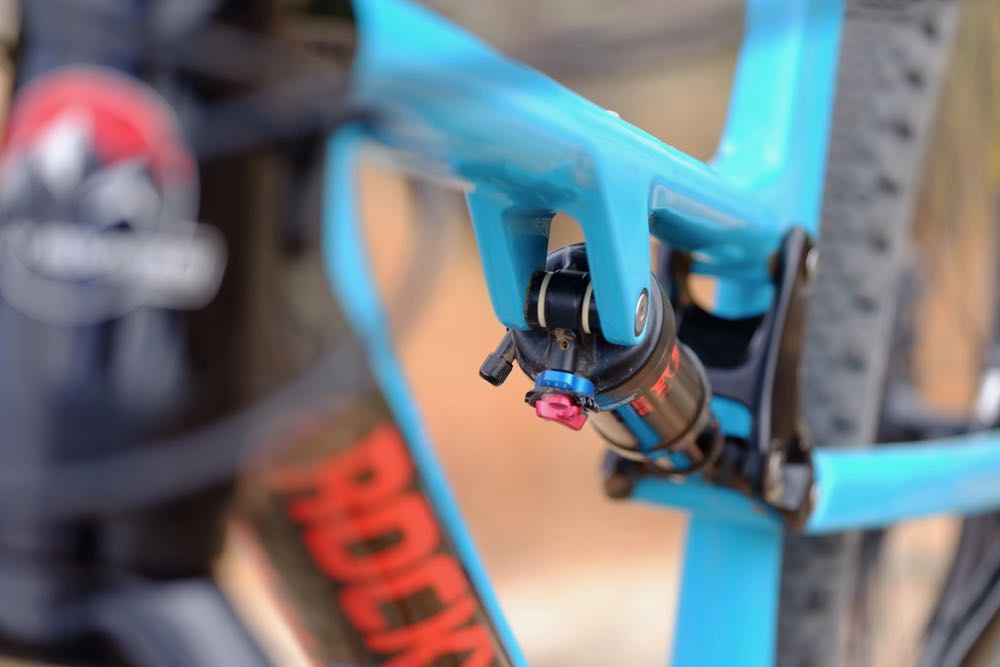
Although the previous frame was nice looking, the updated chassis introduces several technical and aesthetic refinements. The ABC pivot bushings were swapped for sealed cartridge bearings and the Smoothlink suspension design was updated with fresh kinematics. Several changes were made to the shock placement. The previous frame had a rather wide and chunky upper shock mount. In the case of the previous BC Edition, it crowded the shock valve so much it didn’t accommodate some air chucks. The new forward mount is sleek, robust, and fits the frame lines much better.
I didn’t expect Rocky to discontinue their Ride-9 adjustable shock mount system, and indeed they didn’t. With a quick rotation of the concentric squared shock pucks in the lower mount, the geometry can be positioned in one of nine settings. As is the case with all such systems, each setting has pros and cons, but that’s pretty true of bike geometry in general. It takes some time to figure out which setting works best for your riding style, but the adjustment is easy to make. And with that, it’s tough to get too detailed with impressions of the Instinct’s geometry without qualifying which position the Ride-9 system is set to. There is a substantial variance between the extremes of settings.
As I noticed with other Ride-9 bikes and the various settings, there were times when I found conflicting attributes with a given adjustment. While trying to achieve the preferred bottom bracket height, it might upset the desired frame angles. You just have to experiment and see what works best for you. Chances are you’ll find the ideal setting.
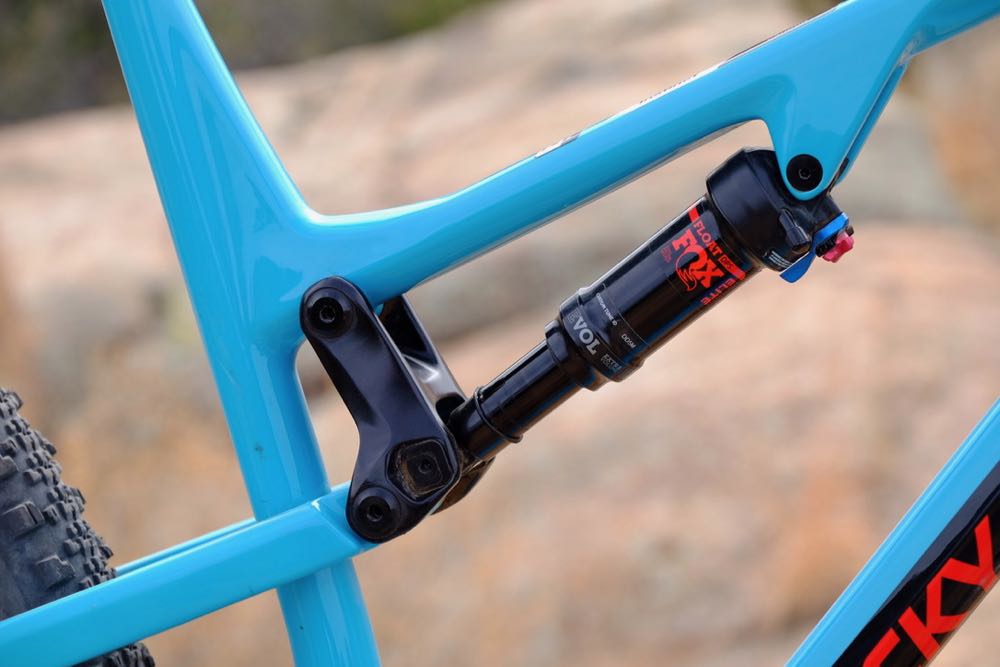
One of the first impressions I had of the previous suspension system was how the rear end tended to sit low in the stroke. Not to say it was squatty, but the new design feels firm in the first few millimeters of the sag, but not so much it hinders small-bump compliance, which is quite good. That translates to quicker acceleration and a more planted feel under power. The damping was fluid and linear through the range with a predictable ramp up at the lower end. Whereas some suspensions have a finite range of adjustment with little forgiveness outside of the ideal setting, the Instinct has a good bit of latitude.
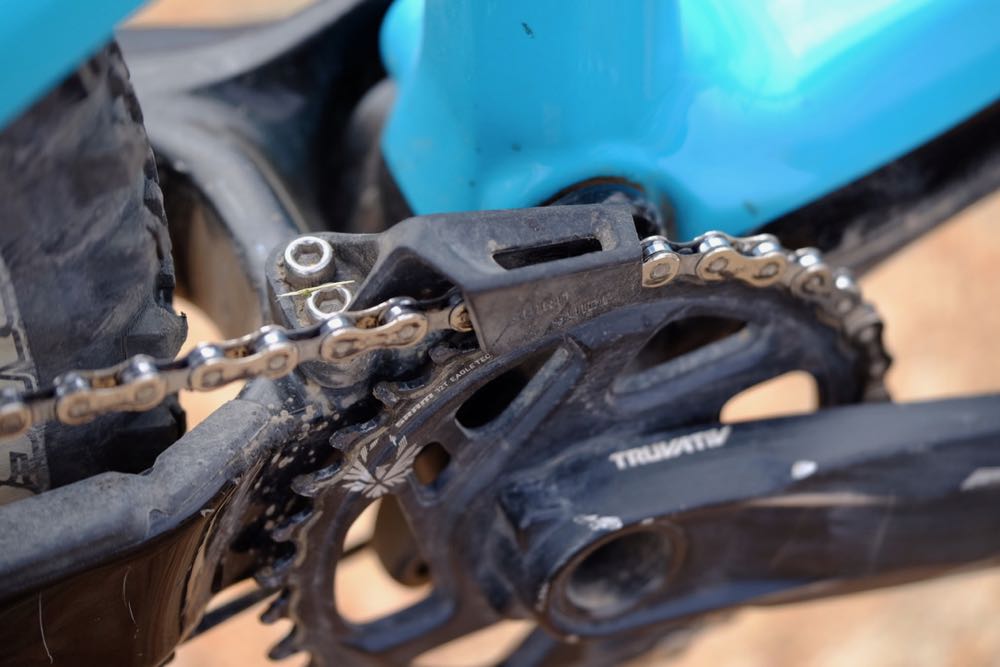
Acceleration and handling were also improved with the new frame. The bottom bracket and downtube meet at an oversized joint that has substantial boat hull shape. It’s pretty stout laterally. The rear triangle is surprisingly stiff given the length of the seat stays, and the rest of the frame is equally rigid. The rear pivot now uses the same “pivotless” outer plate as seen on other Rocky frames.
There are a few fresh refinements similar to what we saw with the introduction of the Altitude, namely the addition of a rubber chainstay guard and armor near the bottom bracket along the downtube. Those elements were not missing from the previous frames but were needed.
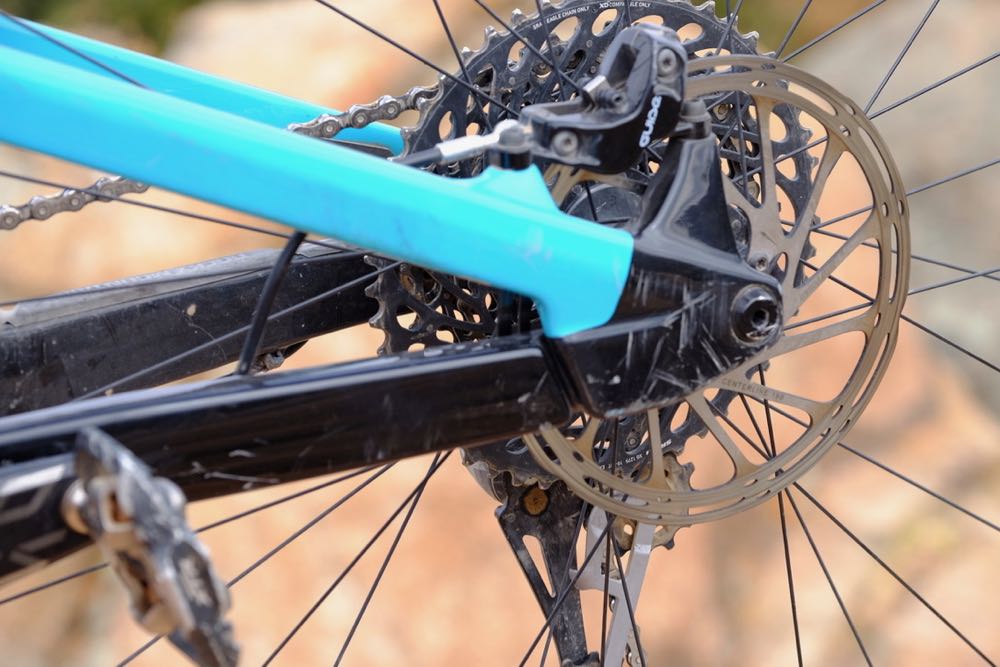
Additional updates include Rocky’s Spirit Guide chain keeper positioned above the chainring, Di2 internal wire guides and battery mount, and Boosted axles front and rear. In the case of the Instinct Carbon 70, Fox Float dampers are used both front and rear. SRAM GX Eagle drive bits and Guide R brakes round out the parts spec placing the MSRP at a respectable $5,299.
On the Trail
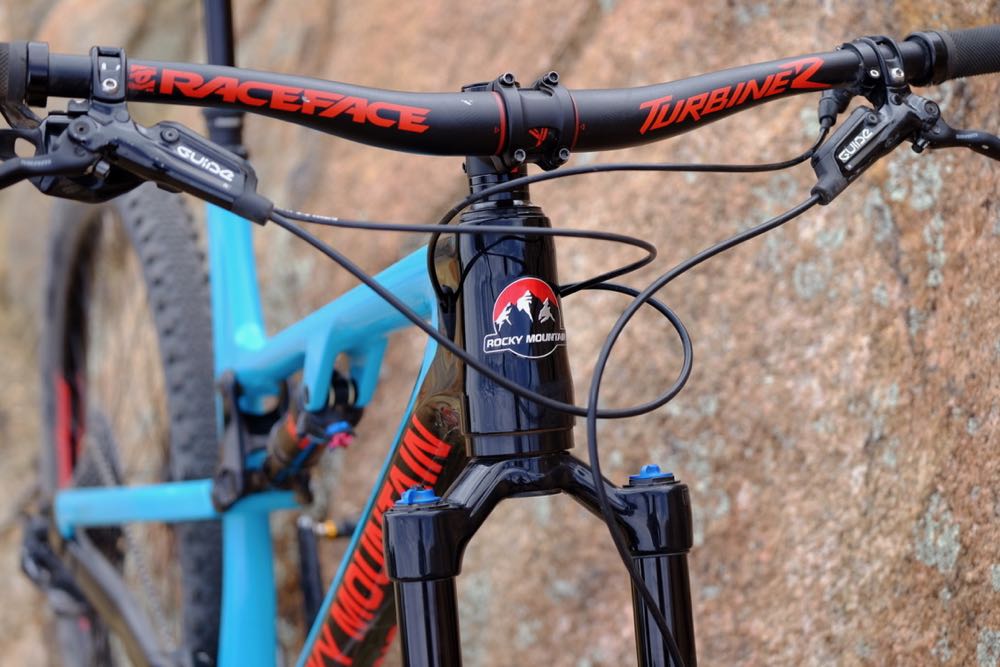 Edit: It has been noted this bike is fitted with the taller lower headset cup. While typically used in the build of the 27+ Pipeline, it is also occasionally used by riders on larger frames like this size XL sample. As the tester, I prefer the added height provided by the taller cup. It can be fitted to the frame if so desired.
Edit: It has been noted this bike is fitted with the taller lower headset cup. While typically used in the build of the 27+ Pipeline, it is also occasionally used by riders on larger frames like this size XL sample. As the tester, I prefer the added height provided by the taller cup. It can be fitted to the frame if so desired.
With the extra travel, I didn’t expect the new Instinct to accelerate as responsively as it does. The new frame and improved kinematics rub a little XC on what otherwise feels like a true trail platform. In a word, the new Instinct is—swift. It’s getting increasingly difficult to figure out which bucket a bike fits within. I tend to think of it as a long-legged XC bike for rough trail.
The handling doesn’t appear changed from the previous model, which is one of the attributes I liked most. The front end is predictable and crisp and allows me to flick the large 29er front hoop around as if it were a smaller 27.5 wheel. It’s not nervous and not too slack. It’s the right amount of neutral for me. Although, once again we need to not forget how the Ride 9 imparts it’s own influences as determined by the rider. As bikes get lower with each successive generation, the Instinct still has a bottom bracket height to reduce constant pedal strikes on my rocky Southwest trails.
If I had a minor quibble, and it is nit-picky, it would be with the 760mm bar width. The previous and current BC Editions ship with 780mm bars and the extra leverage amplifies the cornering chops of the Instinct. Everything else in terms of parts spec is spot on.
For those of you yet to spend any time on a Rocky, it is worth mentioning their sizing has not changed much from previous years. At 6’1” I ride a size XL Instinct just to get the right amount of top tube. It’s the first XL I’ve ever ridden, and fit. It puts the dropper post nearly as far down as it will go with just a pinch to spare. I imagine riders over 6’3” are out of luck with regard to reach. This is not to suggest their fitment or sizing is off, just be sure to evaluate the dimensions before pulling the trigger.
The Wrap Up
As much as I enjoyed the old Instinct, and given how many updates the new bike received, I’m pleased to see the character of the bike hasn’t changed. But it is better. The quicker acceleration, less squatty rear, and refined frame elements remedy any minor concerns I had with its predecessor. With a few tweaks to tires and bars, I think the 2018 Carbon 70 could easily punch at the same weight as the 2017 BC Edition.
